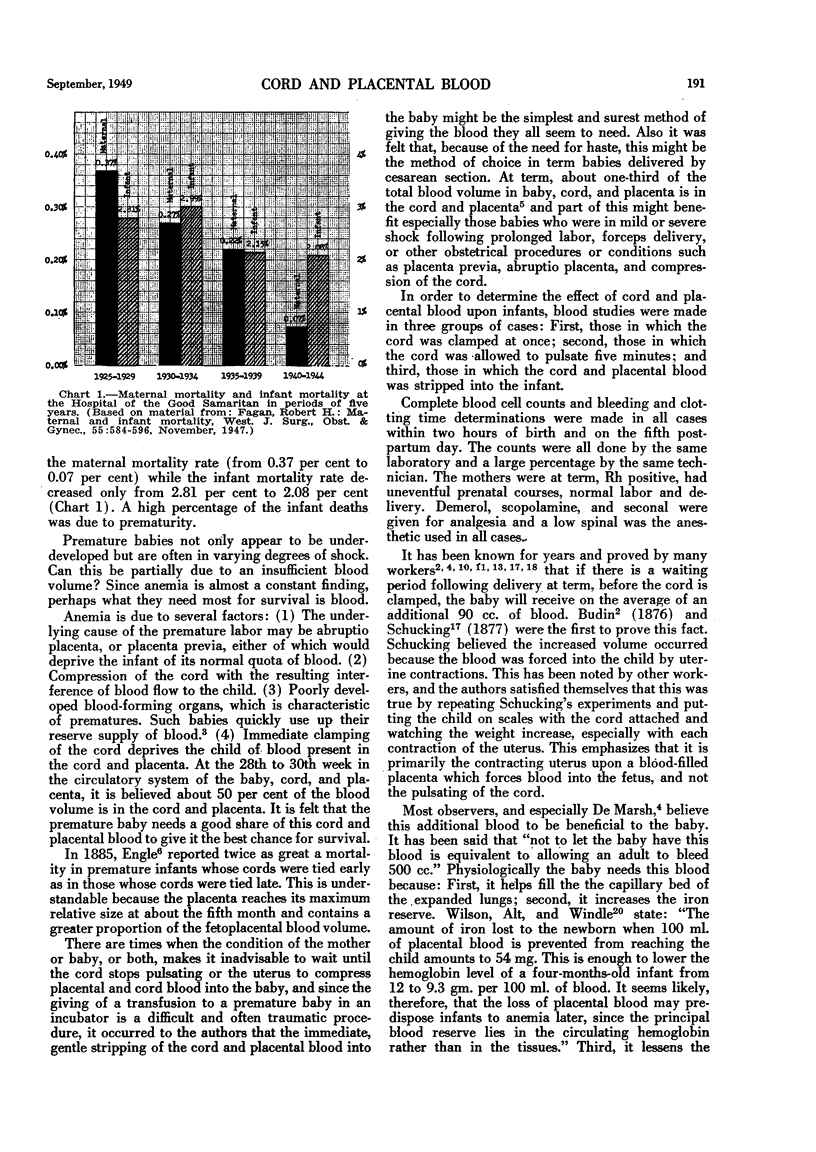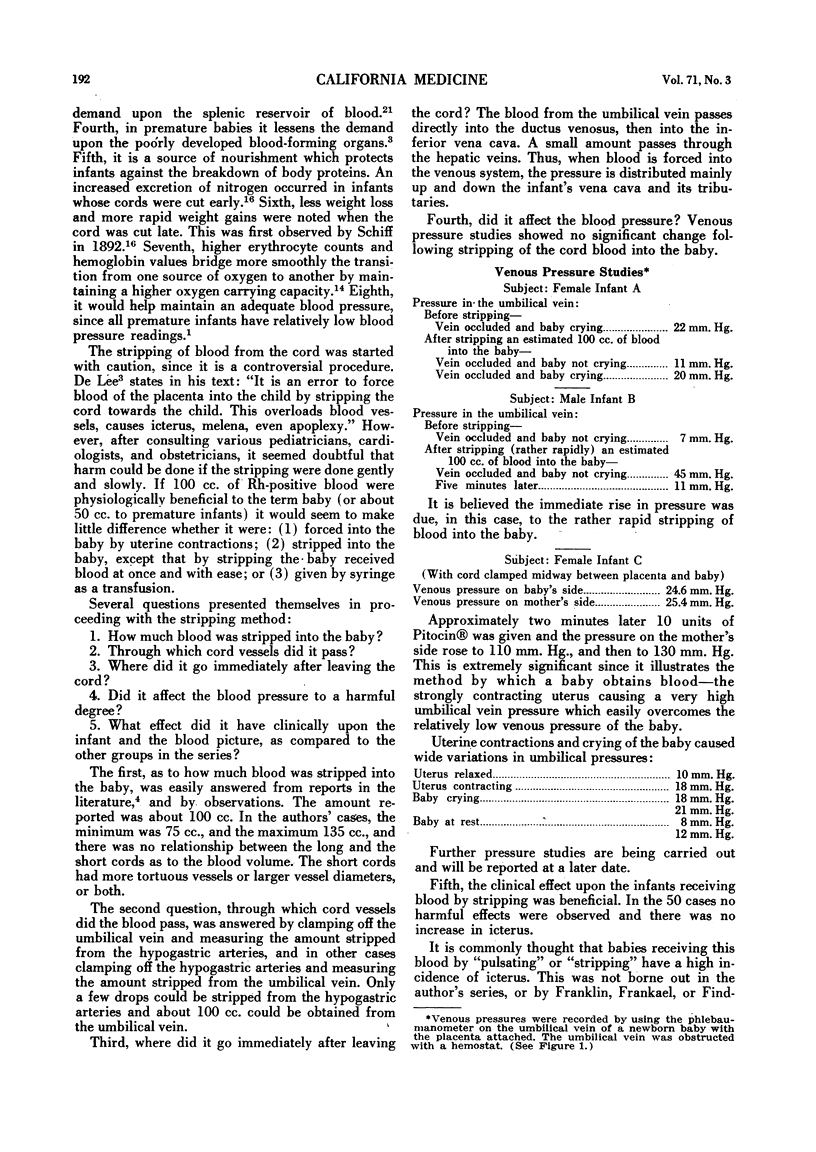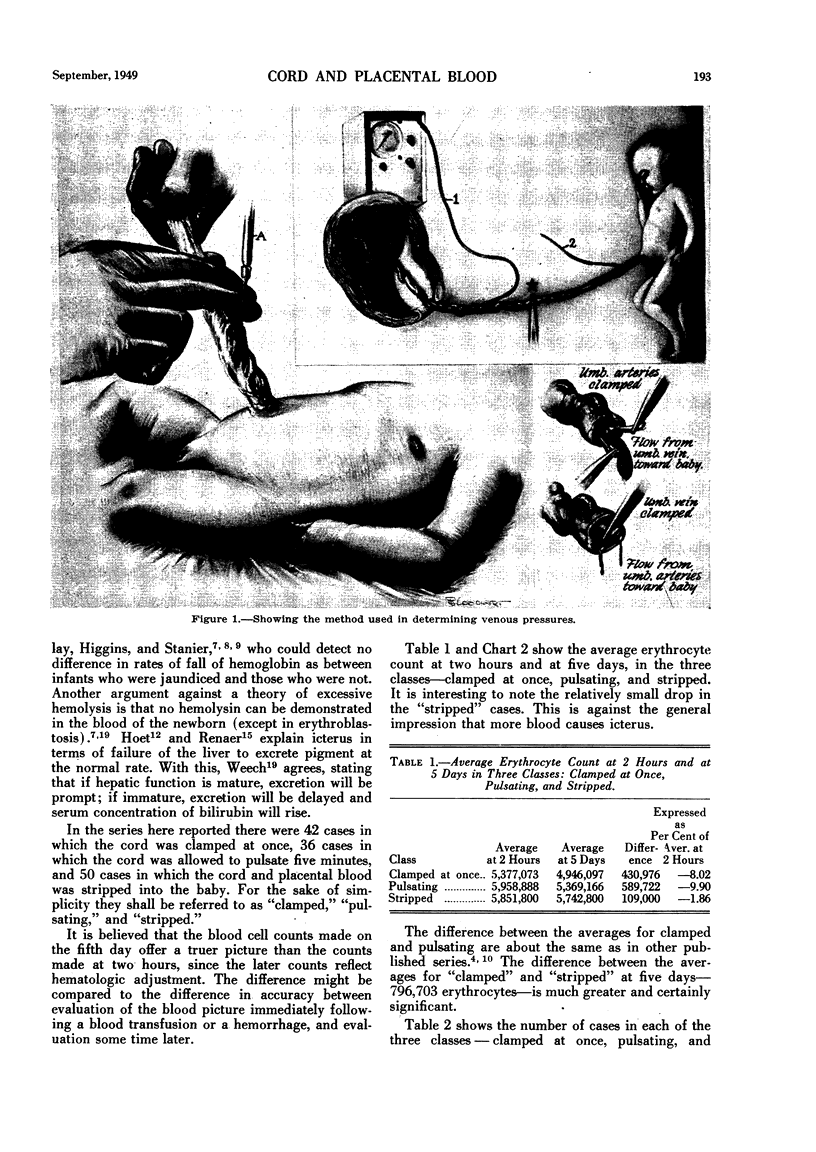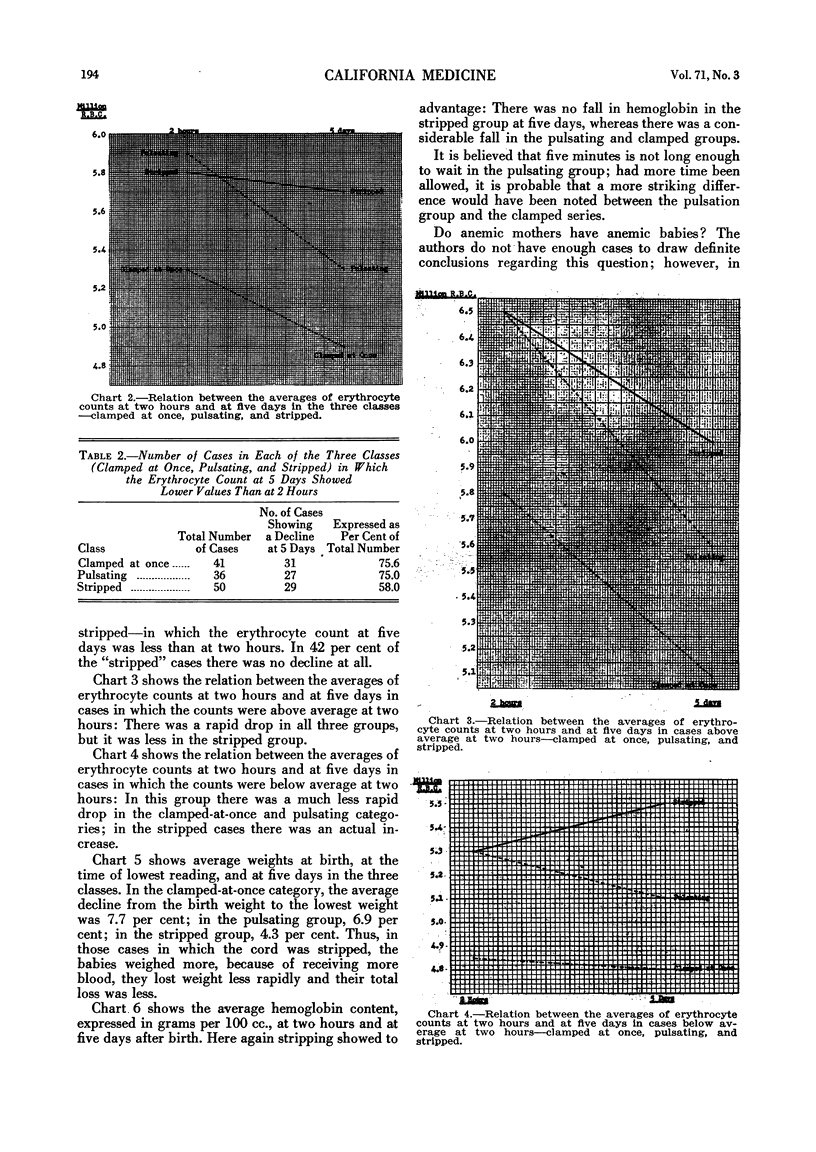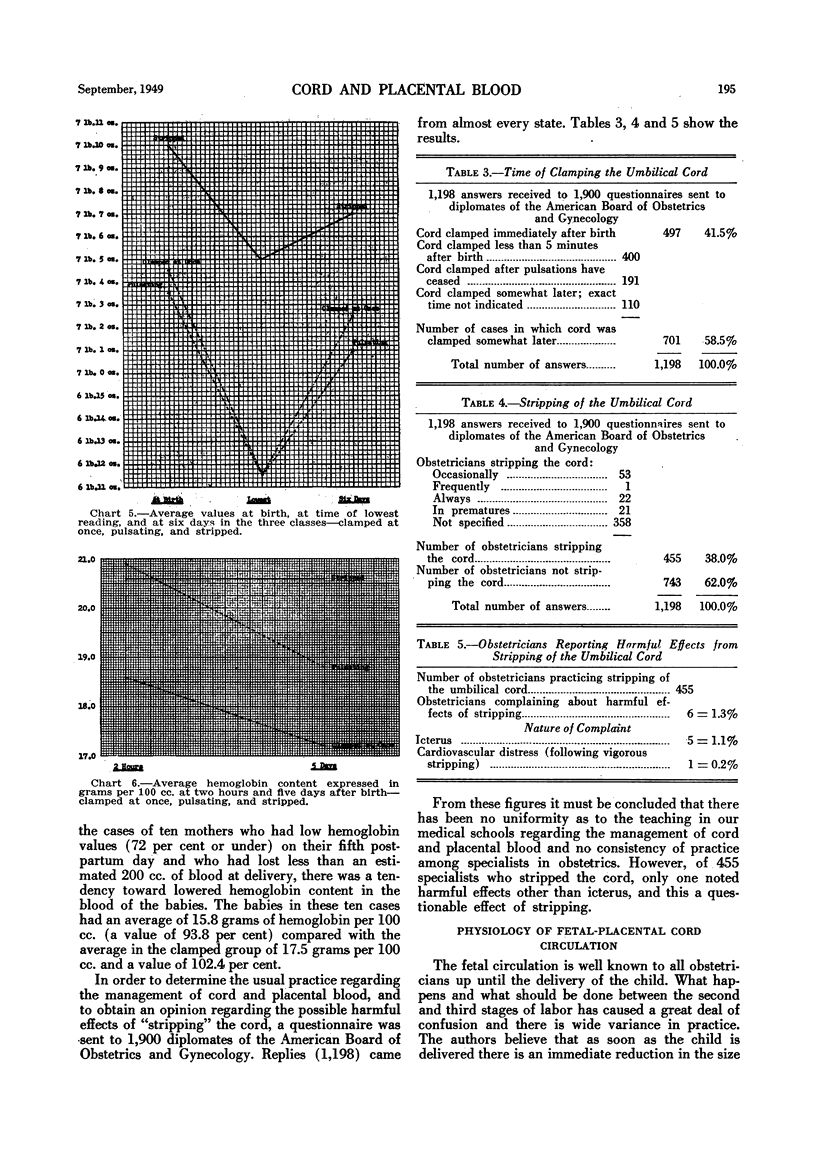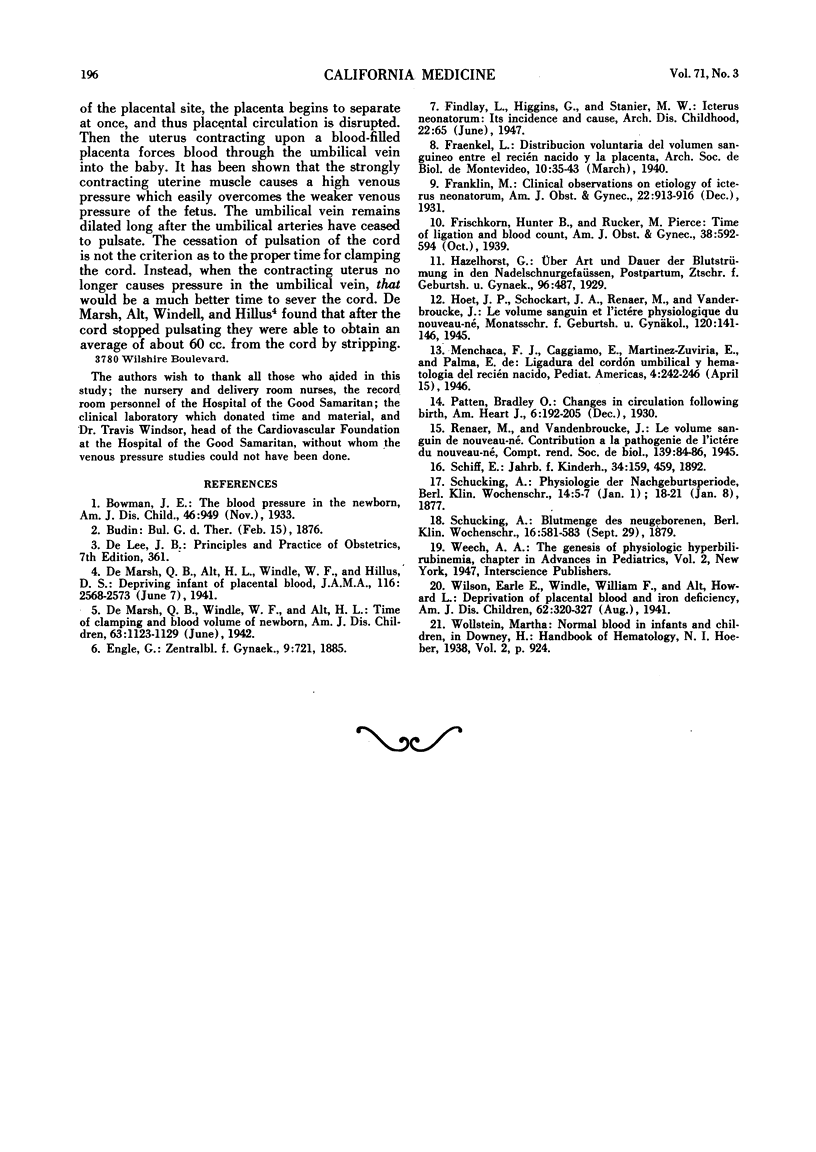Abstract
A comparative study was made of erythrocyte counts and weights of the newborn at term. Three groups were used: Cases in which the cord was clamped at once, those in which the cord was allowed to pulsate five minutes, and those in which the cord and placental blood was stripped into the baby. Standards and procedure were set up so that there would be a minimum of error.
Evidence was elicited showing that babies in the “pulsating” and the “stripped” groups received a significant amount of blood which was beneficial. The amount varied, but when the stripping method was used, the term baby received about 100 cc. of blood.
Babies receiving this blood had higher erythrocyte counts, higher hemoglobin values, higher initial weights, less weight loss, and less rapid loss of weight.
It is believed the additional blood supplied is of benefit especially to prematures and to those infants who are in any degree of shock following long labors, difficult deliveries, abruptio placenta, placenta previa, or compression of the cord.
The added blood benefits the baby by combating the initial shock, by aiding in filling the capillary bed of the expanding lungs, by increasing iron reserve, by lessening demand upon blood-forming organs (especially in prematures), by protecting the breakdown of body proteins and by aiding the transition from one source of oxygen to another.
Five minutes, as a rule, is not long enough to wait for pulsation if the baby is to receive its quota of available blood.
Stripping of cord and placental blood into the infant is not a harmful procedure when done gently and is particularly useful in cases where the condition of the mother or child is such that it is inadvisable to wait for the uterus to force the blood physiologically into the child.
The additional blood does not cause icterus.
The pulsating of the umbilical cord plays only a minor role in the process by which the baby receives blood after the second stage of labor. The pressure of the uterine contractions upon a blood-filled placenta, forcing blood through the umbilical vein into the child, plays the major role. Pitocin and/or ergot preparations would aid in this process.
Anemic mothers have a tendency toward having anemic babies.
Venous pressure experiments using a phlebaumanometer showed pressures before and after stripping, the force of uterine contractions on the umbilical vein pressure and the variation in pressure with crying and at rest. The giving of 100 cc. of blood by stripping affects the venous pressure of the child very little, if done slowly. If the stripping is done rapidly, there is a transient rise with a return to normal within a few minutes.
A survey of 1,900 diplomates of the American Board of Obstetrics and Gynecology showed that there is wide variation in the management of cord and placental blood. Of 455 specialists who stripped the cord, five thought there was some increase in icterus, and one reported cardiovascular distress.
Full text
PDF
